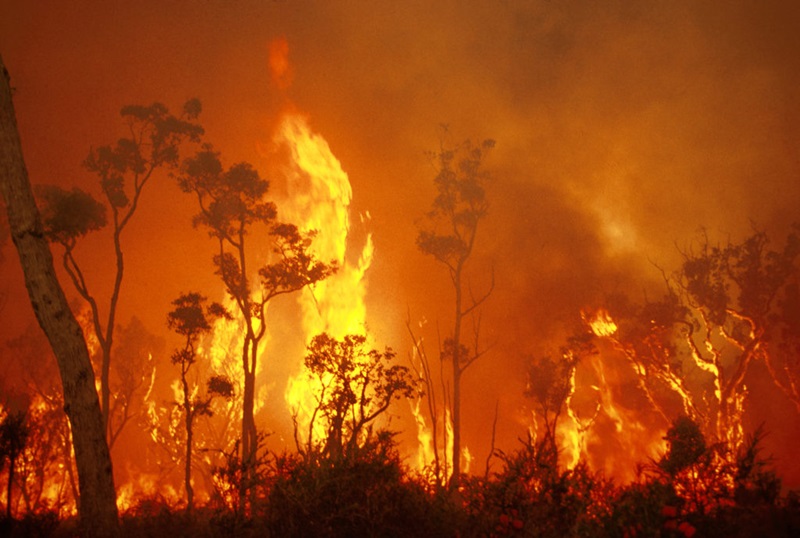Crafting Your Residential property's Security: A Detailed Bushfire Management Plan Guide
Crafting Your Residential property's Security: A Detailed Bushfire Management Plan Guide
Blog Article
The Relevance of Bushfire Monitoring in Fire Protection
In the world of fire defense, the value of reliable bushfire monitoring can not be understated. As communities globally face boosting instances of wildfires, the positive technique to avoid and reducing these natural calamities via critical bushfire administration techniques has become an important element. Past the prompt danger to human life and residential property, the interaction between bushfire management and eco-friendly conservation, community participation, and environment modification positions complicated obstacles that demand comprehensive remedies.
Value of Proactive Bushfire Prevention
Positive bushfire avoidance methods are necessary in mitigating the ruining influences of wildfires on neighborhoods and ecosystems. One essential element of aggressive bushfire prevention is fuel monitoring.
Educating the public on fire safety practices and advertising neighborhood awareness regarding the value of bushfire prevention are important parts of positive strategies. Eventually, proactive bushfire avoidance plays a considerable role in guarding areas and ecological communities from the harmful impacts of wildfires.
Duty of Community Engagement in Fire Protection
Involving the community in fire security efforts is integral to boosting the efficiency of proactive bushfire prevention strategies. Neighborhood interaction plays a vital role in promoting a collective understanding of the threats posed by bushfires and the relevance of preparedness procedures. By involving regional citizens, authorities can distribute essential details ablaze security techniques, evacuation treatments, and very early warning systems, equipping individuals to take positive actions to safeguard their lives and buildings.
Additionally, area engagement efforts aid develop strength within neighborhoods, fostering a sense of unity and shared obligation in mitigating fire threats. With workshops, training sessions, and area occasions, residents can discover exactly how to create defensible areas around their homes, minimize fire gas lots, and recognize potential risks. By promoting a society of readiness and cooperation, areas can enhance their capability to respond successfully to bushfire emergency situations, minimizing the effect on lives and residential properties. Ultimately, community engagement is a cornerstone of detailed fire defense methods, highlighting the value of collective activity in protecting at risk areas from the hazard of bushfires.
Relevance of Wildlife Conservation in Bushfire Management
Conservation of wild animals plays an essential duty in efficient bushfire management methods, ensuring the protection of varied environments and biodiversity in fire-prone areas. Wildlife conservation is crucial as it adds to the general resilience of ecological communities, helping in their capacity to recover and stand up to from the impact of bushfires. By conserving habitats and protecting numerous types, the all-natural balance within these communities is kept, which is vital for their lasting health and sustainability.
Additionally, wild animals preservation likewise aids in reducing the danger and strength of bushfires. Healthy and balanced ecological communities with unspoiled wildlife populations can function as all-natural firebreaks, decreasing the spread of fires and limiting their harmful possibility (Bushfire Management Plan). Certain animal species, like tunneling animals or birds that spread out seeds, play distinct duties in preventing fires or helping in the post-fire regrowth of habitats
Incorporating wildlife preservation into bushfire management techniques is not just essential for protecting biodiversity however likewise for promoting the overall health and resilience of environments despite increasing fire dangers.
Benefits of Strategic Fuel Decrease Programs
Purposefully executing gas decrease programs is essential in alleviating the risk and impact of bushfires in fire-prone areas. These programs include regulated burning, mechanical cleaning, and various other methods to reduce the quantity of flammable vegetation available to sustain wildfires. By purposefully lowering fuel loads in vital locations, such as close to property areas or important facilities, the intensity and spread of bushfires can be considerably reduced.
One of the main advantages of gas reduction programs is the enhancement of overall fire resilience in an ecological community. By developing calculated fuel breaks and minimizing the continuity of vegetation, these programs aid to interrupt the course of a bushfire, making it much easier for firefighters to have and extinguish the blaze. In addition, fuel decrease programs can protect biodiversity by stopping excessively extreme fires that can devastate habitats and intimidate wildlife populations.
Furthermore, these programs can likewise guard human lives and residential or commercial property by decreasing the risk of tragic fires that pose a significant risk to communities. Eventually, critical fuel decrease programs play an essential duty in positive bushfire administration and fostering a much safer setting for both people and nature.
Effect of Environment Change on Bushfire Danger

Higher temperature levels result in drier check plant life, making it much more at risk to ignition. Lowered rainfall in certain areas prolongs dry spell conditions, further boosting the flammability of the landscape. In addition, the altering environment has modified wind patterns and climatic problems, leading to even more irregular fire behavior and fast fire spread.
As the climate remains to transform, the frequency and strength of bushfires are expected to increase, demanding a adaptive and positive strategy to bushfire management. Methods have to progress to make up the changing risk landscape, integrating environment estimates and thinking about long-term resilience in fire administration preparation. Resolving the influence of climate modification on bushfire threat is essential in establishing efficient approaches to protect lives, home, and the setting.
Verdict
Finally, positive bushfire avoidance, neighborhood involvement, wild animals conservation, strategic gas reduction programs, and consideration of YOURURL.com climate modification are vital parts in reliable fire defense. By applying these strategies, we can much better handle bushfire dangers and secure both human lives and the atmosphere. Bushfire Risk. It is vital that stakeholders function together to prioritize these measures to decrease the damaging impact of bushfires on ecological communities and neighborhoods

As the climate continues to transform, the frequency and intensity of bushfires are anticipated to increase, requiring a positive and adaptive technique reference to bushfire management.In final thought, proactive bushfire prevention, community engagement, wild animals conservation, critical fuel reduction programs, and consideration of environment change are critical elements in effective fire protection.
Report this page